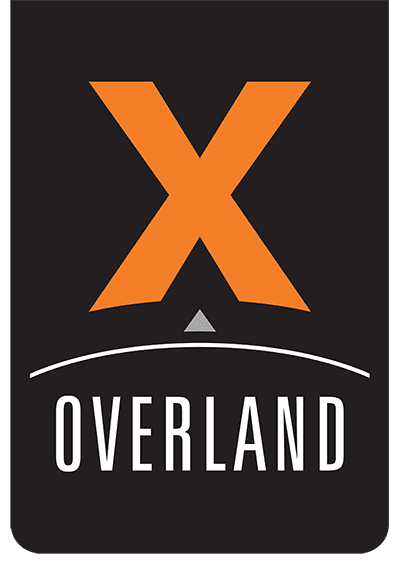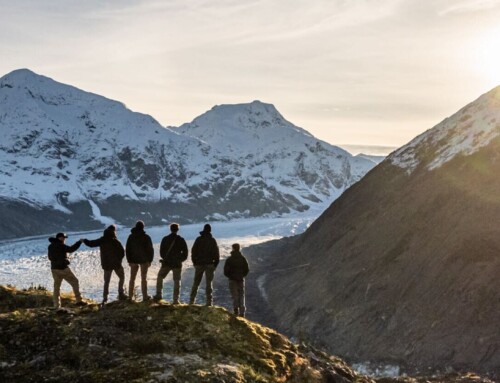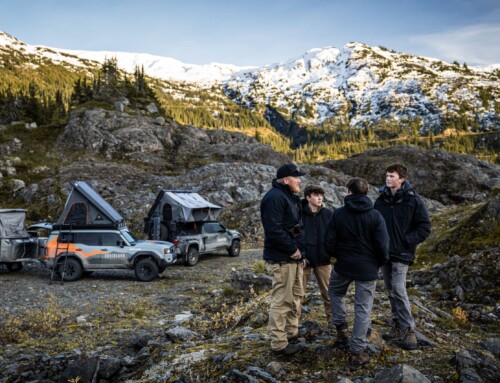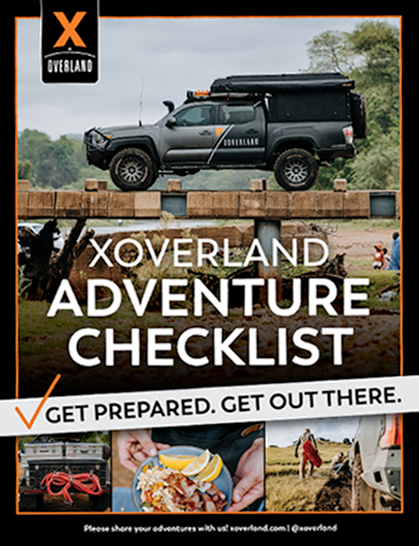Have you ever thought about heading to Europe to go overlanding in Scandinavia? Perhaps even shipping your vehicle or motorcycle overseas–across the Atlantic Ocean–and then flying over to pick it up in port and begin your journey?
This overlanding adventure may be more accessible than you think! We’re here to give you the basics you’ll need to start planning your journey. We assure you–it’s worth it!
Keep in mind, that you will not find much in the area of ‘off-pavement’ or ‘offroad’ travel in Scandinavia, but the history, culture, and beauty of this region is worth putting on your bucket list.
If river crossings, glaciers, and more off-pavement travel is your style, Iceland has much to offer via the F-Roads through the center of the country.
Pro Tip: Learn about “The Trans Euro Trail”
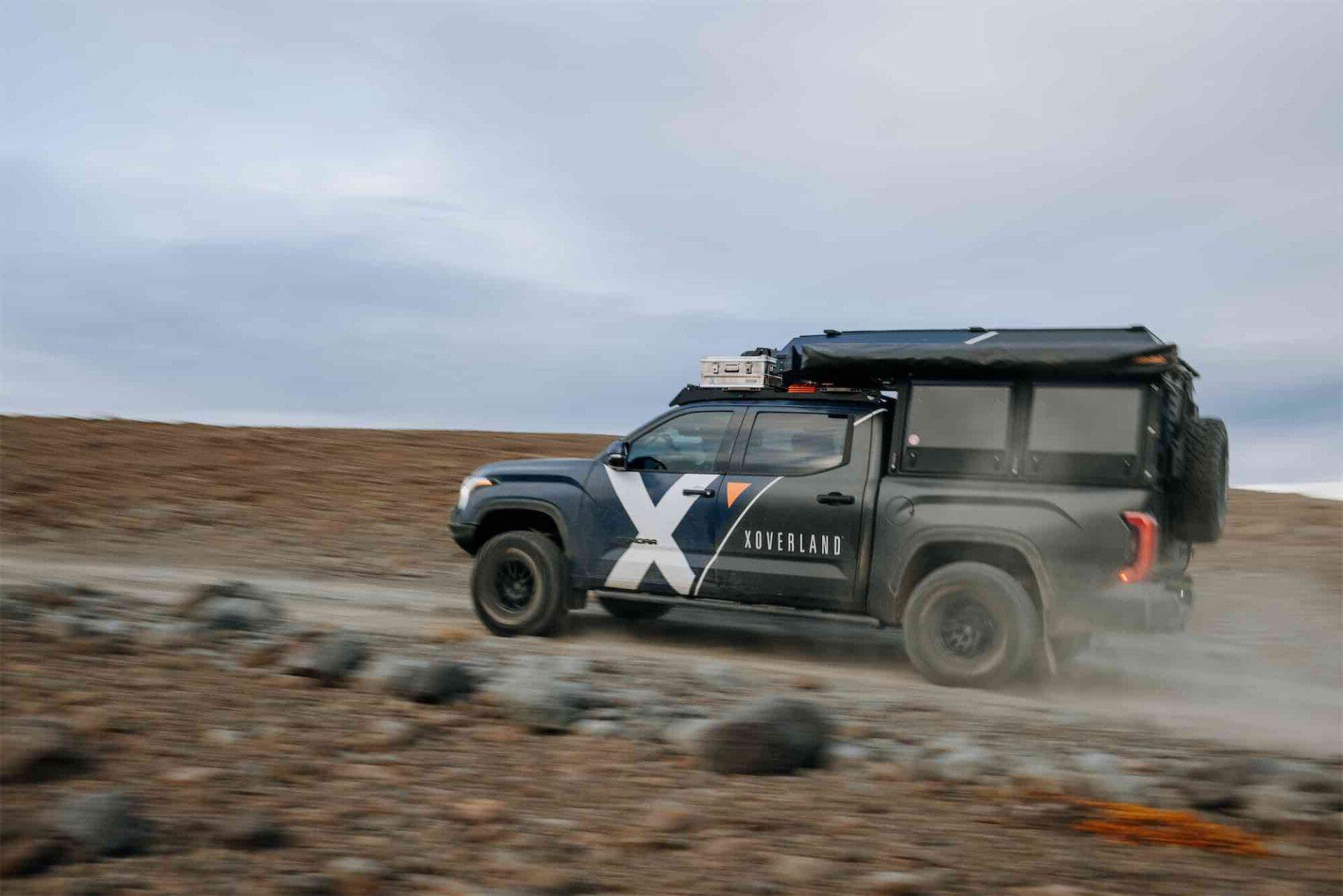
The Trans Euro Trail is similar to a B.D.R. (Backcountry Discovery Route) in the U.S., except that it encompasses most of Europe.
Similar to B.D.R.s (Backcountry Discovery Routes) found in the U.S., the Trans Euro Trail was also started by a group of passionate adventure motorcyclists with a goal of establishing a more remote, dirt-oriented route throughout all of Europe.
Their ambitious work paid off, and now overlanders driving four-wheel-drive vehicles as well as adventure bikes can find off-pavement touring routes throughout some of the most beautiful countries in Europe–including the Scandinavian countries of Norway, Sweden, and Finland. Keep in mind, these roads are much like our national forest roads as you won’t find technical driving but more wide, smooth, dirt roads.
Along the Trans Euro Trail is also where you will find your best opportunities for wild camping and camping at well-established but still pleasant, clean, and friendly campgrounds.
Getting There
When you decide to ship a vehicle overseas, it’s important to identify the country with the most favorable laws for importing your vehicle. Some countries will charge you more to import your vehicle and, in general, create more of a hassle for you than others, so choose wisely. We shipped our X Overland fleet into Belgium and then started for Denmark.
A big advantage to overlanding in Europe is the fact that 27 countries belong to the European Union (EU) and follow the laws spelled out in the “Schengen Agreement.” This basically means that once you are admitted into an EU country, you can travel freely across the borders of other EU countries similar to how you can move across state borders here in the U.S.
Under the Schengen Agreement, tourists from the U.S. are given a 90-day tourist visa every 180 days. That’s plenty of time to do some overlanding throughout Europe and Scandinavia!

Be sure to check the expiration date on your passport before you head overseas and make sure you have at least six months left before it expires so you’re prepared for any unforeseen circumstances.
Pro Tip: Check the expiration date on your passport well before your trip and make sure you will have over six months left on your passport while traveling. Traveling is full of the unexpected, and just imagine being locked down in a country only to find your passport is soon to expire!
If there is a particular country you wish to visit for longer than 90 days, you will need to visit that country’s embassy to apply for a visa to cover your stay there.
With the exception of the Faroe Islands, all of the countries we visited during our filming of The Nordic Series were members of the Schengen Agreement: Belgium, Germany, Denmark, Sweden, Finland, Norway, and Iceland. That meant we only needed a singular visa and it was good for 90 days of traveling throughout all of these countries. Legally speaking, there are no more user-friendly means of international overland travel than that.
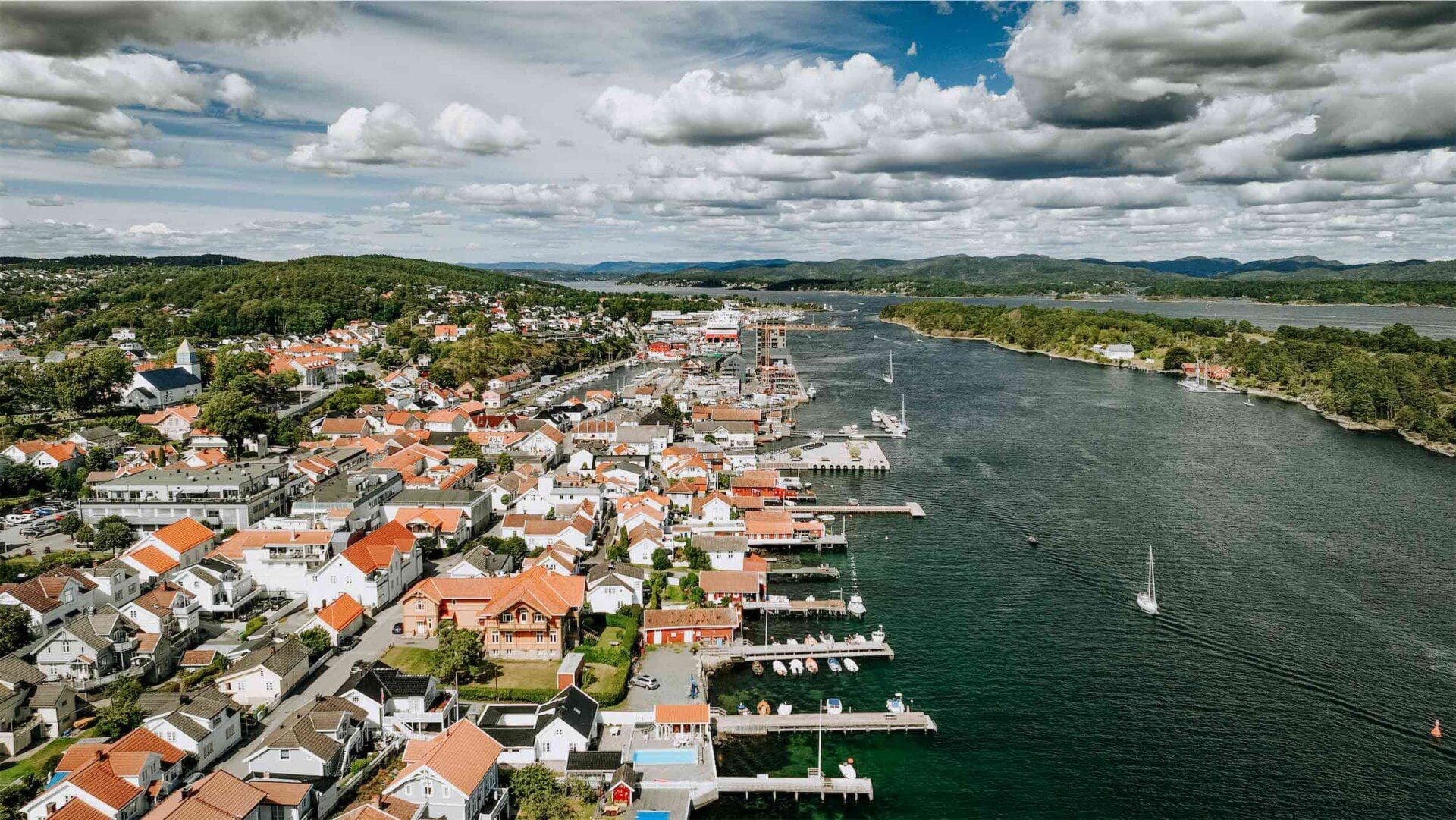
Denmark! Land of quaint seaside villages and cafes featuring delicious coffee and, of course, danishes.
Denmark
Denmark is a great starting point for a Scandinavian overlanding adventure! Along with being the birthplace of danishes and offering lots of great eats and cafes, an overlander can find some fun driving and camping along the beaches of Denmark’s West Coast.
Denmark serves as the ferry port for moving on to other Scandinavian countries. After a few days of beach camping and eating danishes in quaint cafes, you’ll be ready to board the ferry bound for Norway to begin your exploration of the farthest reaches of Northern Europe.
After having toured Norway, Sweden, and Finland, you will likely find yourself back among the Danes before heading out aboard a ferry to the Faroe Islands and Iceland.
Pro Tip: You need to know about “Allemansratten” or “right to roam”
Throughout all of Scandinavia and throughout many European countries, citizens and visiting tourists enjoy the “right to roam.” Known as “Allemansratten,” the right to roam laws allow the general public access to most of the private land within these countries.
Activities like hiking, bicycling, horseback riding, and cross-country skiing are all permissible as is tent camping. Of course, there are a few rules, so be sure to follow the guidelines and be respectful once you are there.
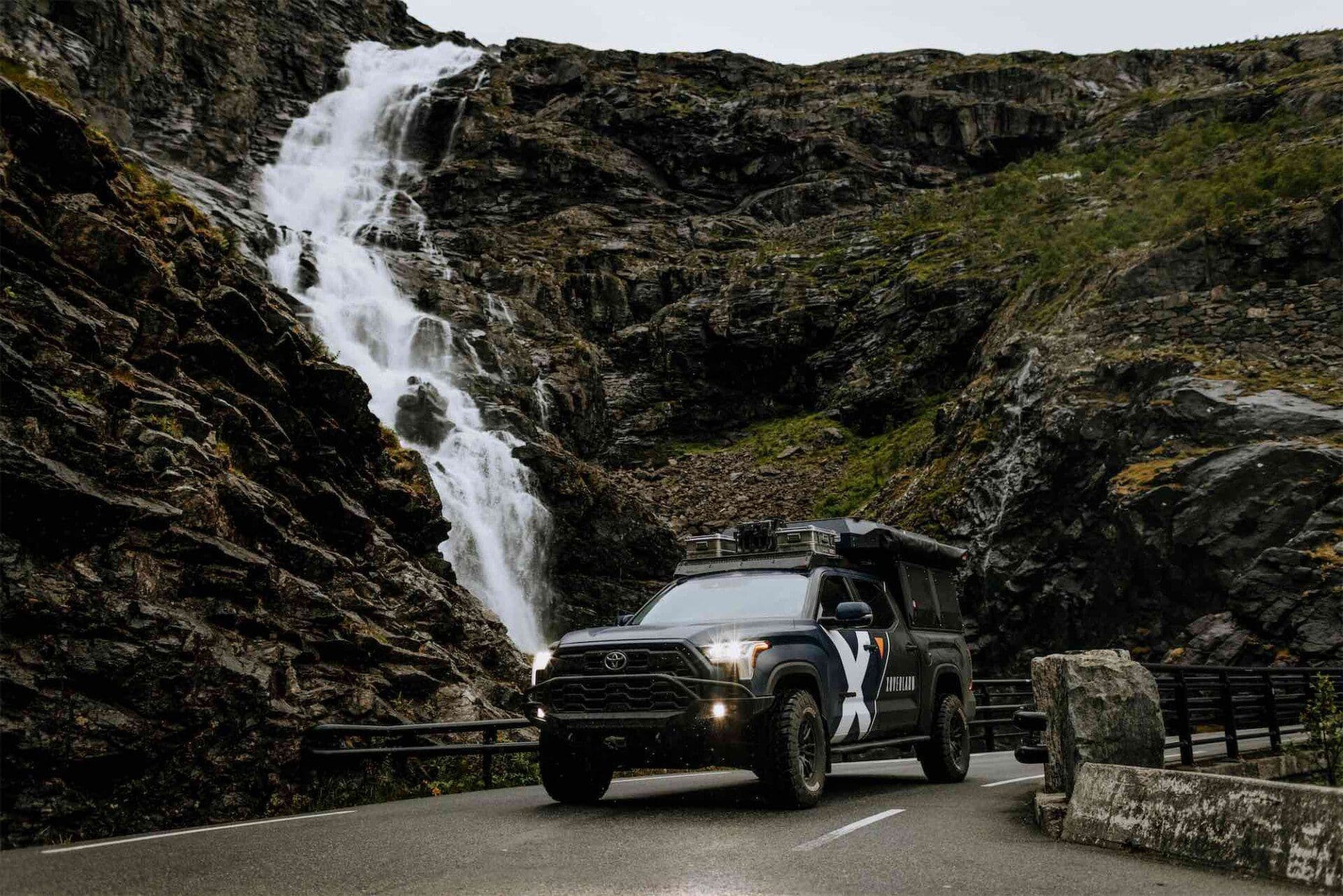
Norway is a land of dramatic cliffs, breathtaking fjords, amazingly engineered roads—and sheep!
The Fjords and Dramatic Cliffs of Norway
In Norway, you will find dramatic landscapes and stunning scenery formed by granite cliffs thousands of feet high descending directly into fjords as deep as the cliffs are tall. The Norwegian landscape has been formed by massive glaciers retreating at the end of the last Ice Age and immaculately constructed roads meander along rocky coasts and throughout intense mountain highlands.
Everywhere you will find sheep! Like people throughout Scandinavia exercising “allemansratten,” sheep also enjoy the right-to-roam and will frequently be found nearby along roadways and trails. Be sure to keep an eye out for them while driving as they love to even sleep in the road!
Our team absolutely loved Norway, and we found ourselves enjoying the land and its people. We already can’t wait to return!

Sheep are everywhere throughout the Scandinavian countryside, and Rachelle enjoyed showing them lots of love!
Pro Tip: Push Yourself to Make It All the Way to Nordkapp!
Nordkapp is the farthest point north in Europe you can reach by vehicle. Believe us–it’s a hard push of lots of miles to reach this iconic and historic place on the North Cape of Norway, but it’s worth it!

We loved our camps along the Trans Euro Trail in the Boreal Forests of Sweden and Finland.
The Boreal Forest of Sweden
Running parallel to Norway is the country of Sweden. What differentiates Sweden from Norway is the boreal forest. While Norway is famous for its craggy, steep cliffs buttressing up against the fierce North Atlantic, Sweden is covered in woodlands that are part of the enormous Boreal Forest of the Far North.
The Boreal Forest exists within the high northern latitudes of the world and covers a massive area comprising 11% of the Earth’s terrestrial surface.
We found the forests of Sweden almost mythic in tone and enjoyed our quiet, wooded camps there along portions of the Trans Euro Trail.
You won’t find many off-road or off-pavement trails there, so it’s a great place to lace up those hiking shoes!
Pro Tip: If you need a great campsite recommendation, be sure to check out the Seskaro Campground in Sweden. Right on the ocean with great showers, beach, and mountain bike trails–you’ll never want to leave!

Finland is rich with history and the team enjoyed many a peaceful and gorgeous night here.
Overlanding in Finland
While similar to Sweden in terms of harboring deep and mysterious woodlands, when it comes to overlanding, Finland offered a lot more in the way of trails and lovely camping areas.
Finland is a great place to rent an Airbnb at some point to fully take advantage of their many saunas and lakes if you get a chance.
It’s not unusual to find yourself crossing a river or two in Finland, and we enjoyed several beautiful campsites in this country!
Of all the countries comprising the popular wilderness area known as “Lapland,” Finland is most famous for this special region’s iconic elements like reindeer and the ancient Sami people. Be sure to check out the Sami Museum to learn more about the history of these incredible people and how they thrived in the Arctic regions.
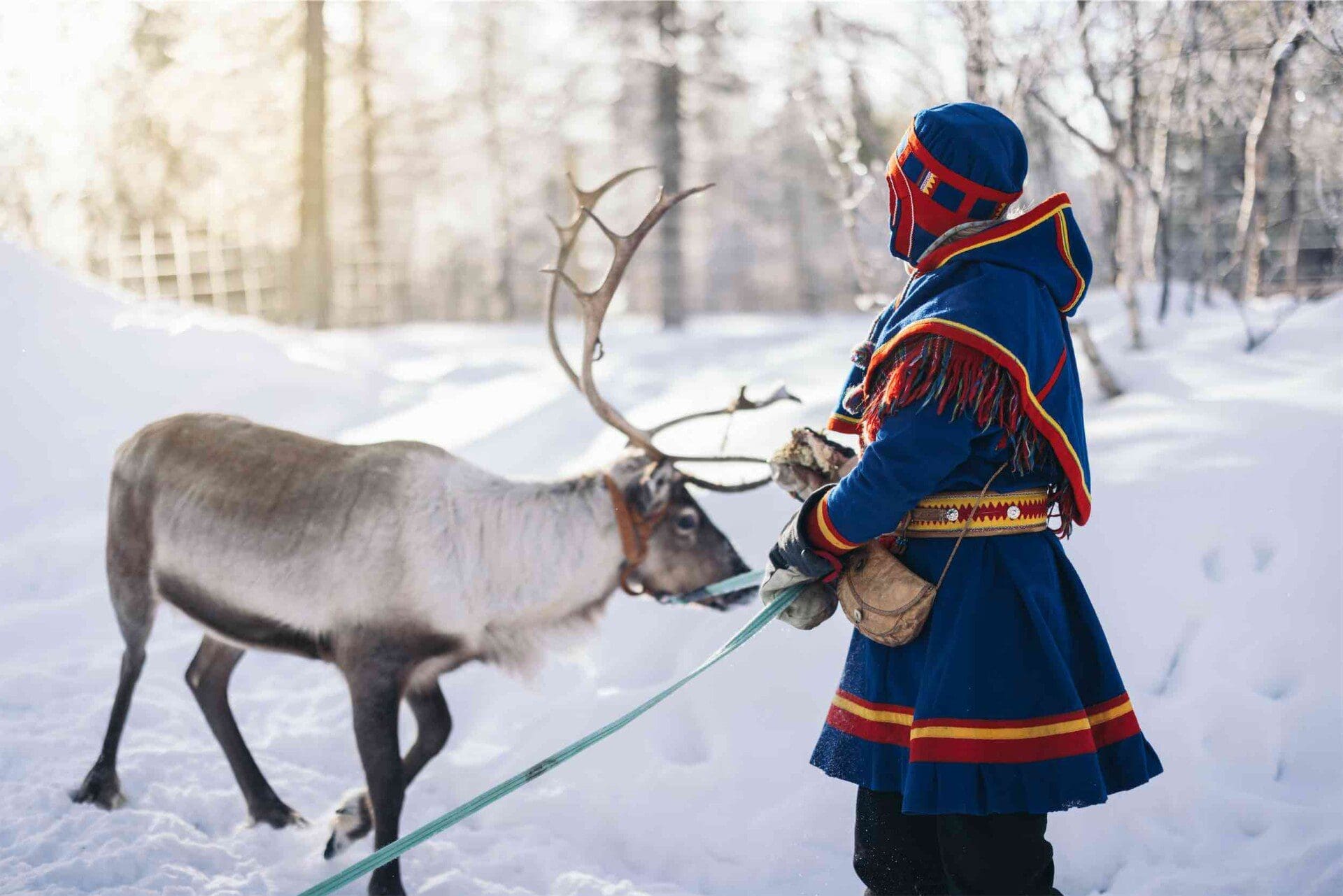
The area above the Arctic Circle in Finland known as “Lapland” is famous for its reindeer, many of which have been domesticated by the descendants of the ancient Sami People.
Pro Tip: “Lapland” is a special region within Scandinavia
Lapland is a massive wilderness area existing above the Arctic Circle that encompasses a region comprised of several countries: Norway, Sweden, Finland, and even Russia. Lapland is known for its abundance of wild reindeer and ancient Sami people native to this area for thousands of years.
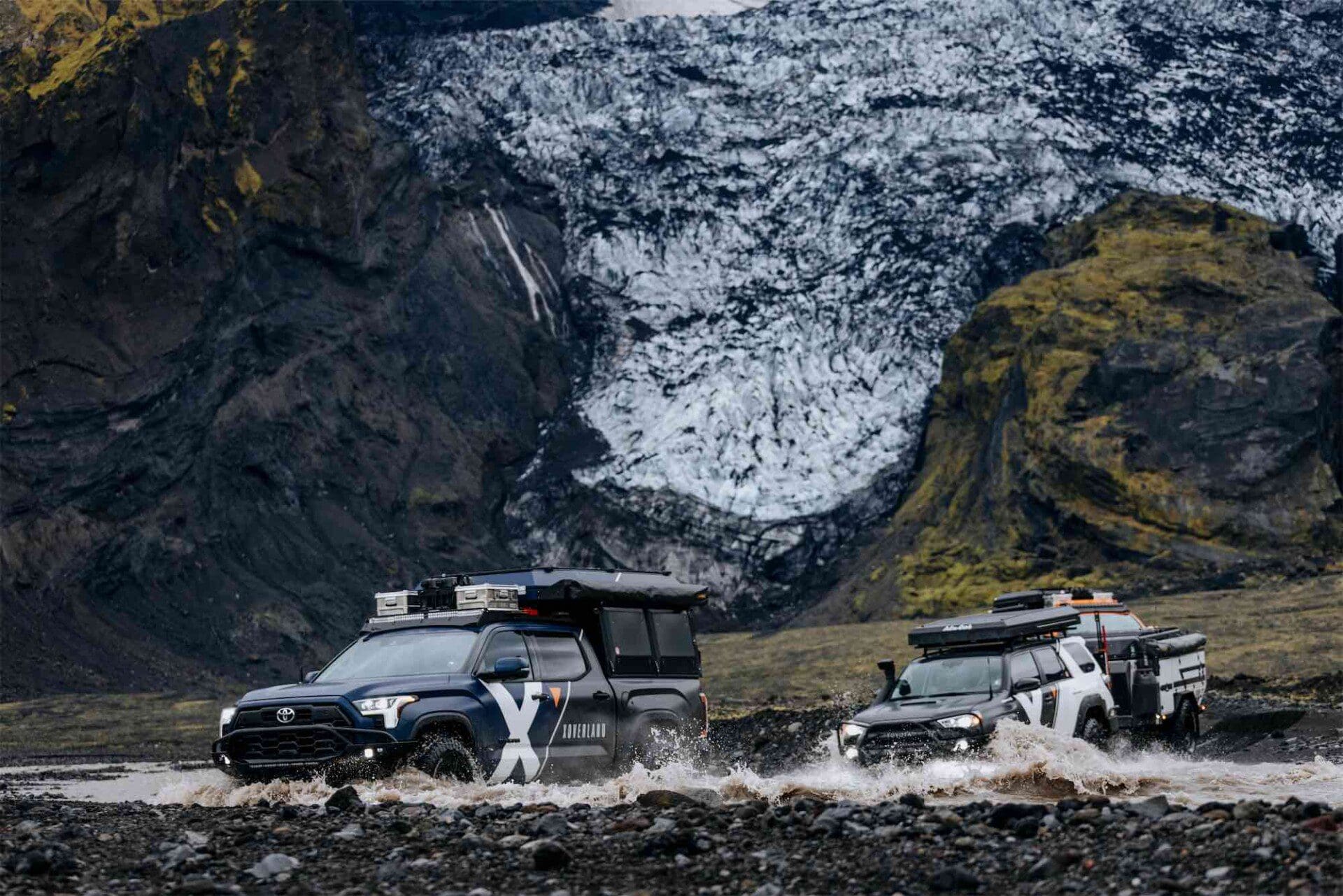
Of all the countries we visited during the filming of The Nordic Series, Iceland topped the list!
Iceland
The Land of Fire and Ice is an Overlander’s Dream World
While we thoroughly enjoyed our journey throughout Finland, Sweden, the Faroes, and especially Norway, Iceland is where we felt most at home as overlanders.
While our well-built, heavily-equipped overland vehicles often felt out of place in the mainland and even Northern Europe, in Iceland they were right where they belonged–and so were we!

If you’re overlanding in Scandinavia, get ready to experience the “Midnight Sun,” as seen here in one of our many Icelandic camps.
Iceland is a place that you can’t quite believe, a surreal land of active volcanoes, massive glaciers, black sand beaches, and icebergs.
While the 800+ mile “Ring Road” circumnavigates the entire island and is immensely popular with tourists, our team opted for the more rugged “F-Roads” that plugs an overlander directly into the interior highlands of Iceland.
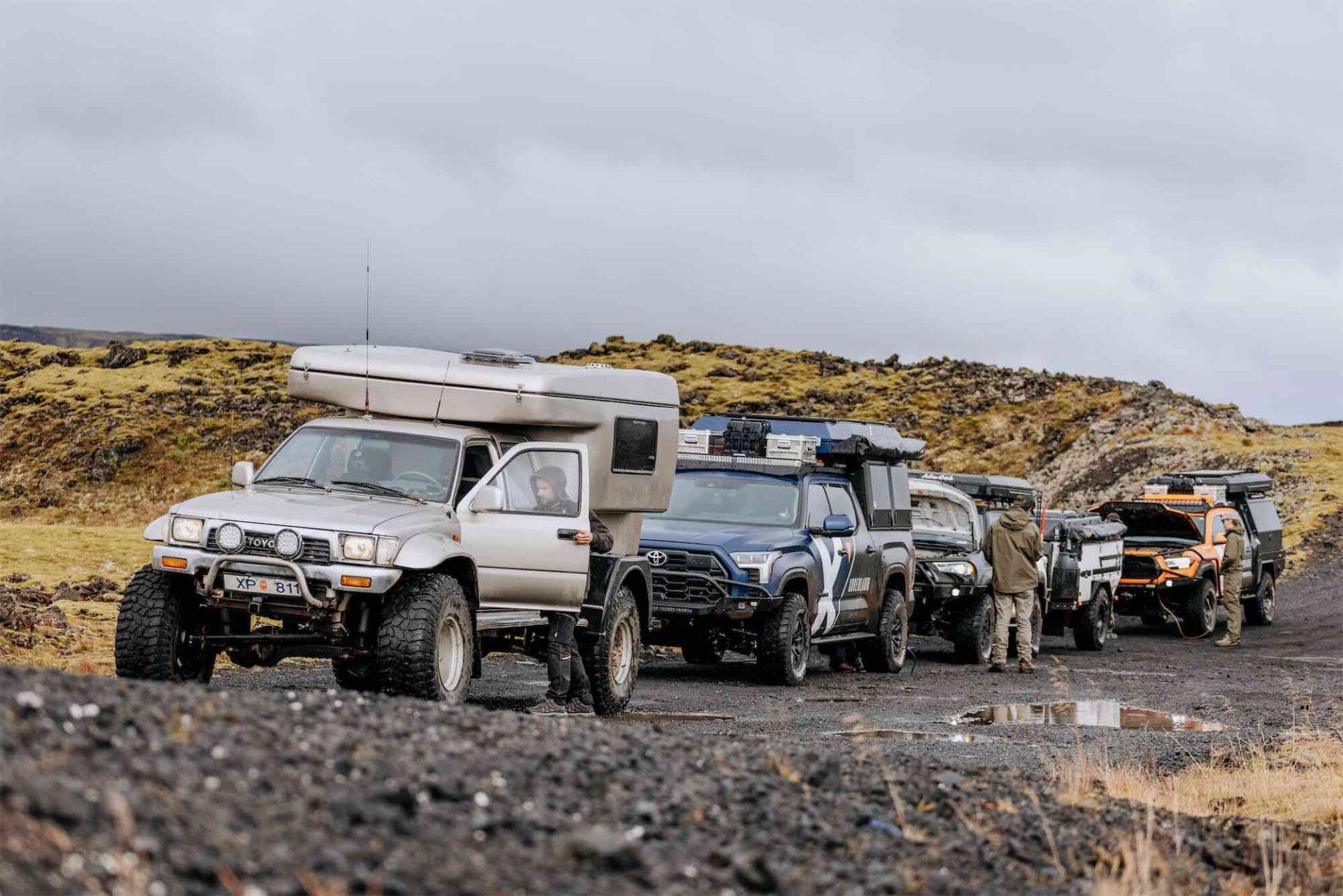
When overlanding throughout Scandinavia, learn the difference between “Off-Pavement” and “Off-Road” to avoid having to pay steep fines!
Pro Tip: “Off-Pavement” or “Off-Road”? Know the difference!
In Scandinavian countries, you would never use the term “off-road” to describe anything you might do in a 4×4.
The correct term to use is “off-pavement,” as this means that while you are leaving a paved road surface, you are transitioning onto a dirt, gravel, or two-track trail legally established for driving a vehicle or motorcycle.
While this may come across as being very restrictive when you think about how we overland here in the U.S., the European laws are very similar. For example, with the exception of some areas of B.L.M. (Bureau of Land Management) lands specially designated for cross-country off-road travel by motorized vehicles (like sand dunes and some badlands areas), in the U.S., it is illegal to drive a 4×4 or motorcycle off of designated roads and trails.
As Tanner aptly stated in our X Overland Podcast episode about this subject (overlanding Iceland), “The F-Roads are no joke!” Steep, rocky climbs, and deep river crossings are the norms.

We spent most of our time in Iceland touring the interior highlands along Iceland’s famous “F-Roads” where we were able to utilize all of the capabilities of our X Overland vehicles.
Whether you bring your own overlanding rig or rent one in Iceland, you need to make sure it is equipped to handle the rugged interior if you plan on heading there.
And remember what we had to say about “Off-Pavement” vs. “Off-Road”? That is worth remembering when you’re visiting Iceland where tires leaving the designated trail can result in fines that exceed $5,000.00!
As extreme as Iceland is about banning off-trail travel during the summer months, in the winter, when deep snow covers most of the island, people are free to take their Arctic-equipped 4x4s nearly anywhere, as driving on top of the snow doesn’t harm the land underneath it.

If shipping your own vehicle overseas sounds too complicated and expensive, consider flying to Iceland and renting a 4×4 to tour the country.
Other Options for Overlanding Northern Europe and Scandinavia
Overlanding tourism is getting more popular each year. Nowadays, you can fly to faraway places like Costa Rica, Argentina, and Iceland where you can rent an overlanding vehicle or adventure motorcycle and tour the country. This fly-and-drive option makes it relatively easy to go overlanding abroad and return home afterward.
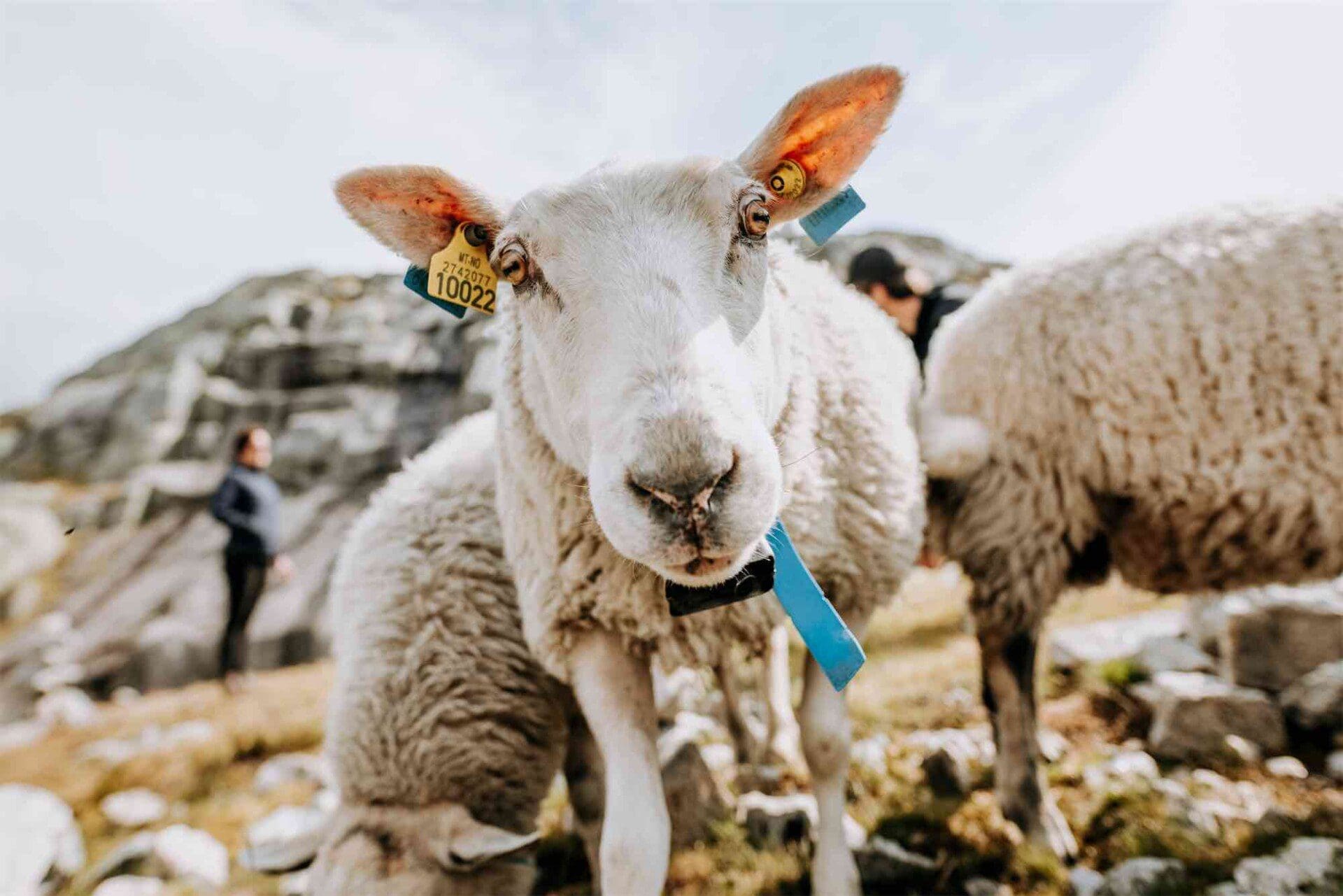
Scandinavia is a very safe place to go overlanding; and other than the sheep coming through your camp, you’re not likely to encounter any theft or threats.
Pro Tip: Scandinavia is a clean and safe place
In all of our journeys, we have traveled nowhere in the world that is cleaner, friendlier, or safer than Scandinavia–and that includes many places within the U.S.!
Scandinavians are tidy people who appreciate cleanliness and organization, a fact that manifests itself in every town or farmstead you visit. They are also extraordinarily friendly and respectful of others–even tourists!
This is an area of the world where you can sleep well in camp, knowing that the chance of any kind of theft or menacing disturbance is highly unlikely.
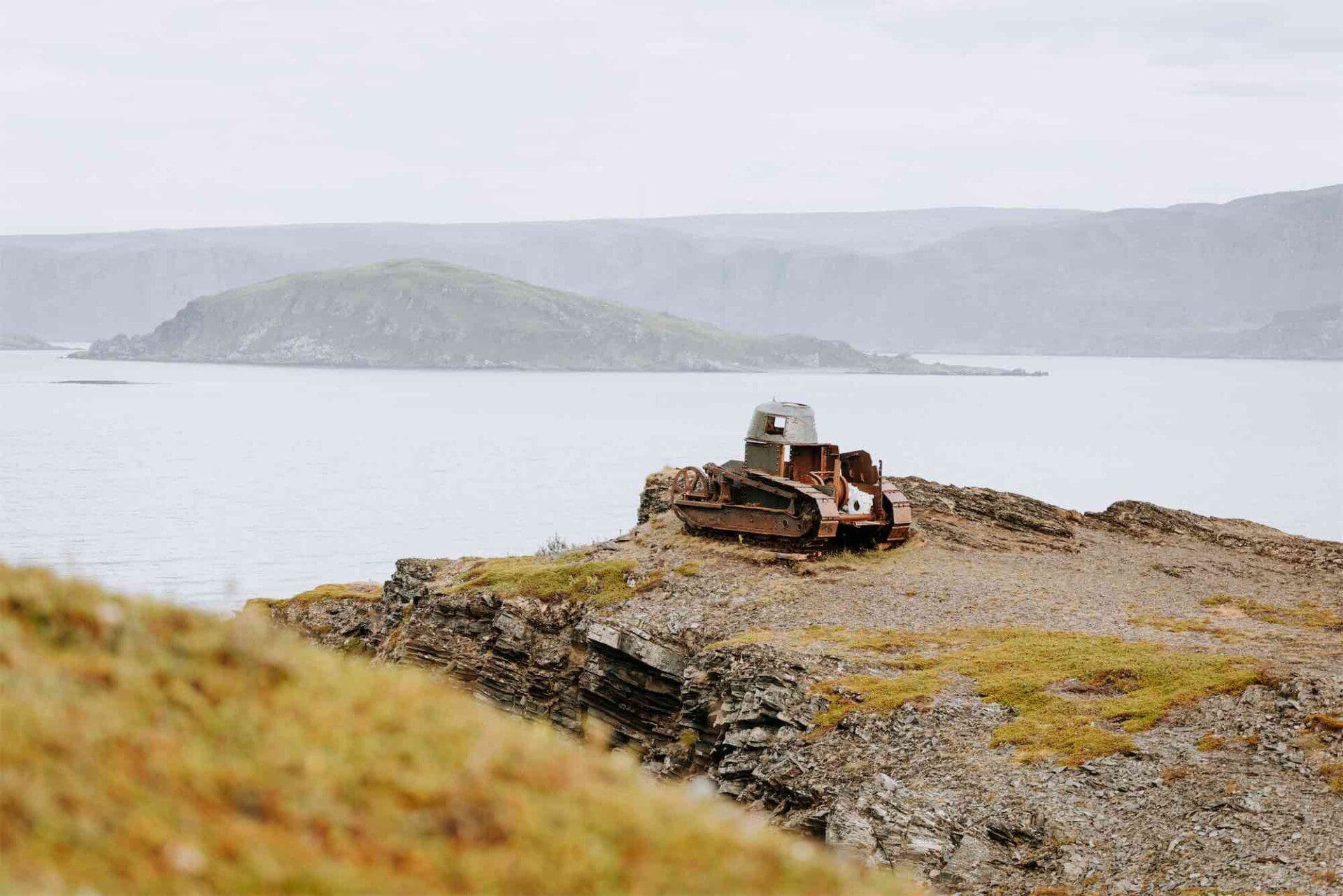
Historic sites like this one featuring an abandoned German tank abound throughout Europe and Scandinavia.
Final Thoughts on Overlanding in Europe
If you decide to head to Europe to go overlanding, keep the big picture in mind when it comes to the value of travel is at the core of any overlander’s heart.
Western Europe and Scandinavia is a highly developed region of the world. People have been building a civilization here for thousands of years. To help with the context here, consider that during our overlanding tour of Scandinavia, we frequently walked through churches and cathedrals that were over three times older than the United States.
Europe really is the “Old World” as it is often called, and those traveling throughout Europe will palpably feel the breadth and depth of its history. You will leave with a powerful sense of what has happened there over the course of millennia.

Most of Europe is paved, but that’s not all bad, as seen here by the radical switchbacks of Norway’s famous “Troll’s Road”!
Of course, all of the above is why technical, extremely rugged “off-road” trails don’t really exist in most of Europe. In fact, that is why many Europeans look forward to planning their own dream trips to the U.S., where they can experience the likes of Hell’s Gate in Moab, Utah.
Overlanding in Europe is beautiful, it’s pleasant, and it’s steeped in culture and history. Europeans love to travel, and travel is encouraged there. European infrastructure is built to make traveling to other countries affordable and accessible to people of average means.
So if you head to Europe to go overlanding, set yourself up for a great and possibly even life-changing experience by remembering what you’re there to do: travel.

Europe and Scandinavia are set up for international travel that allows you to share your experience with others while deepening your understanding of the world.
